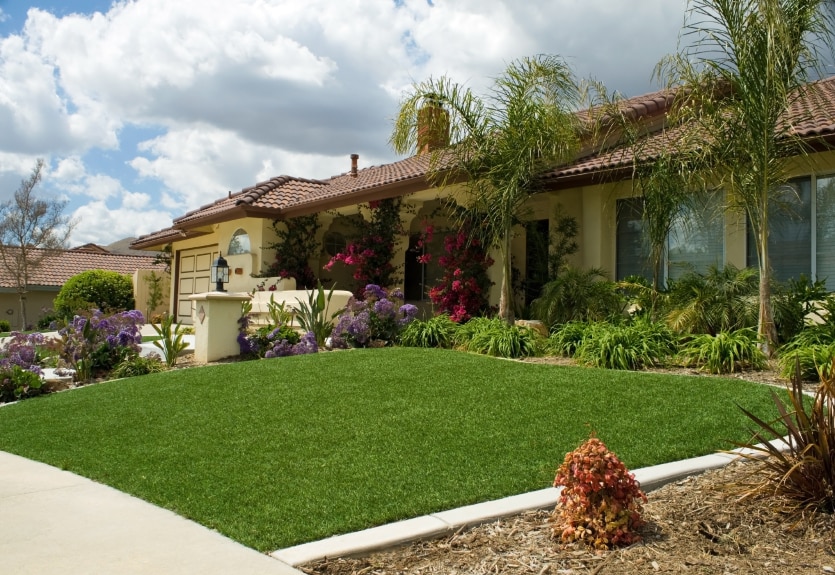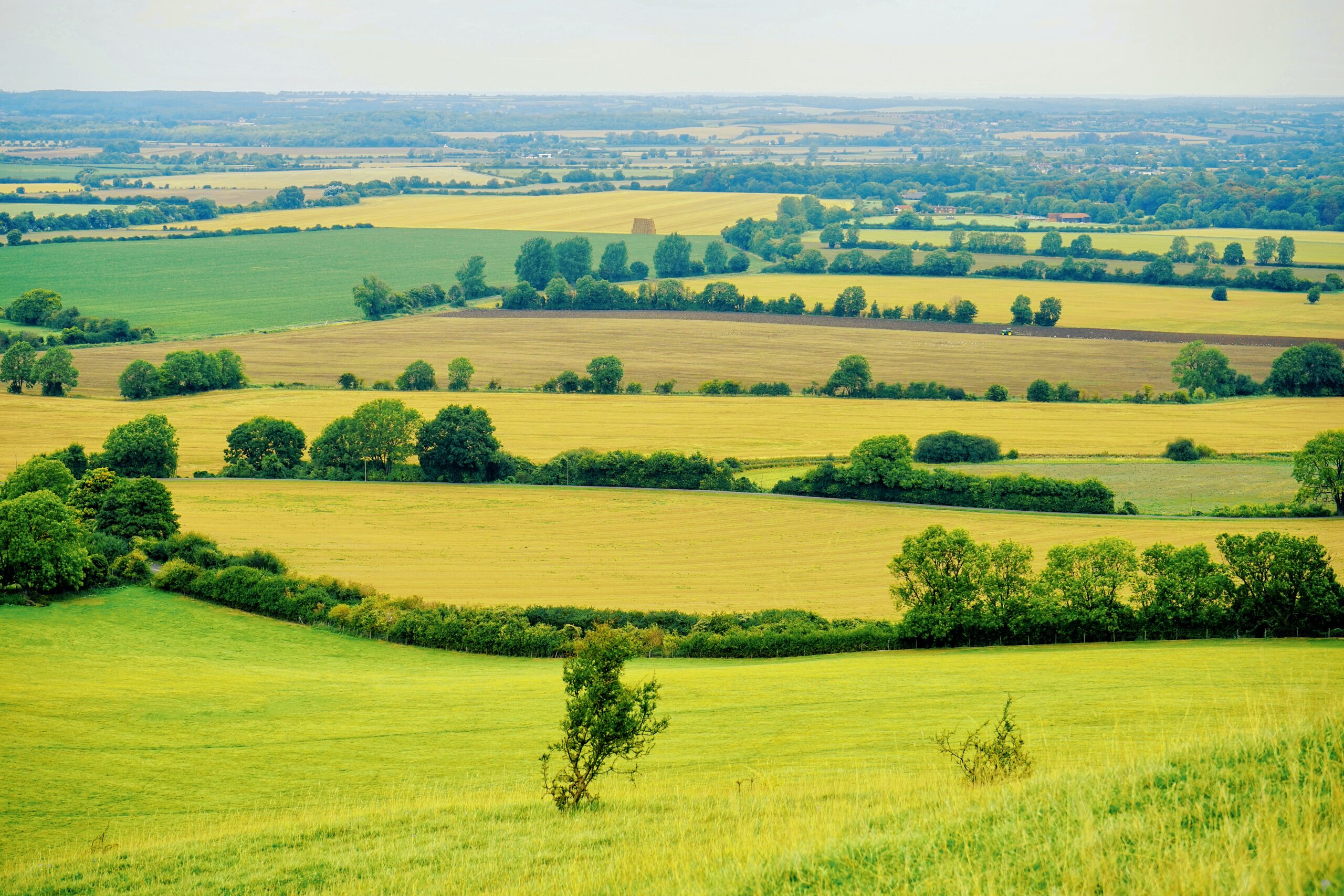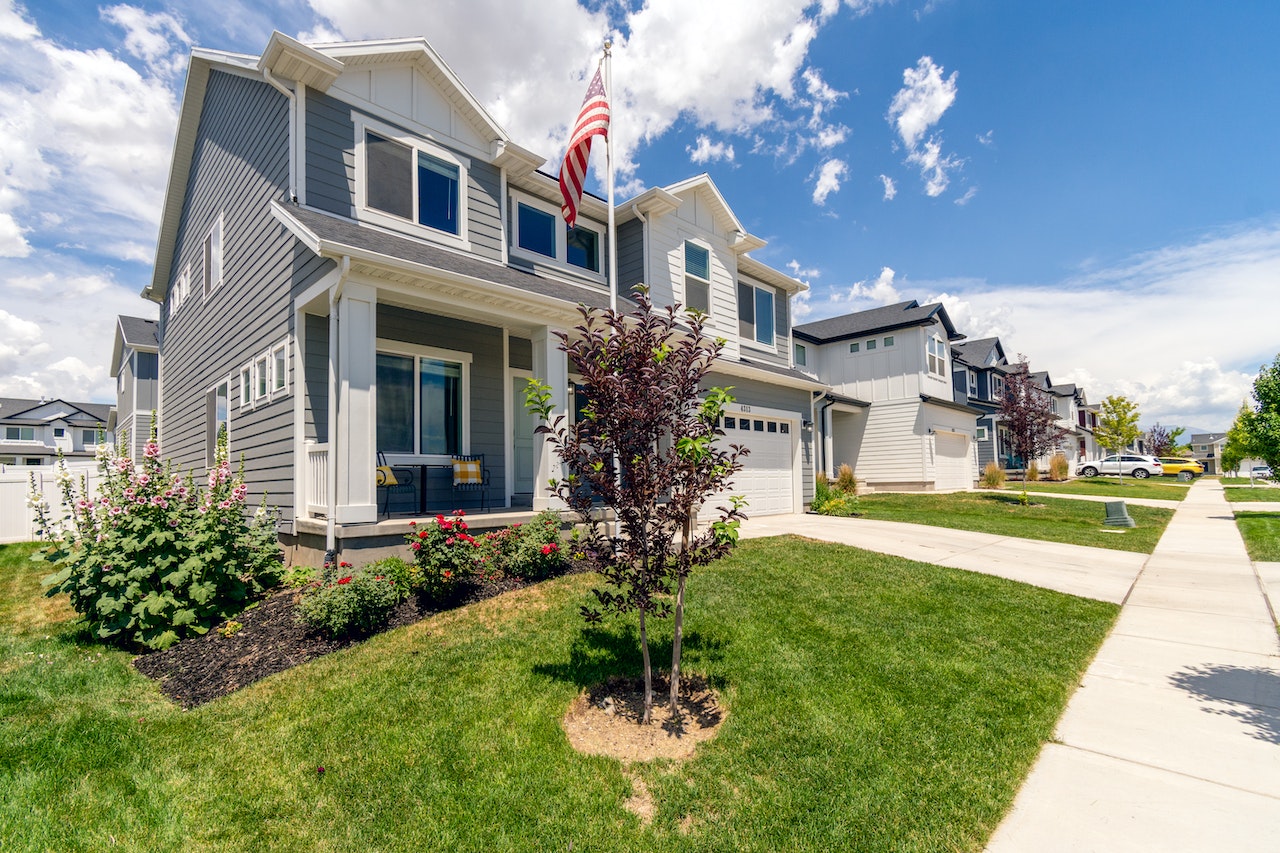
The American lawn isn’t dead, it’s evolving.
Is the American lawn a fast fading antique of times gone by? Most newspapers say yes.
Megan Garber of the Atlantic writes that grass lawns “have now outlived their purpose.” And she’s not alone! Publications across the US, from the Washington Post to CNN have proclaimed the death of the American lawn with eye catching headlines like “The rise and fall of the American lawn” and “The American Lawn: A Eulogy.”
In recent years, California politician Jerry Brown declared all out war on natural grass lawns, stating that “the idea of your nice little green grass getting lots of water every day, that’s going to be a thing of the past.”
“…green lawns are a cornerstone of the American dream. They are a symbol of prosperity, responsibility, and civic virtue.”
It’s not hard to see why some people are so angry at grass lawns. The United States contains about 40 million acres of grass lawns, and it’s estimated that each square foot of grass requires between 90 and 135 gallons of water per year to keep alive. So collectively, that means that American lawns need something like 235,224,000,000,000 gallons of water per year to stay green! In Southwestern states where constant droughts have a vice grip on the local water supply, this number is almost obscene.
Yet despite all of their shortcomings, green lawns are central to American identity. They are a symbol of prosperity, responsibility, and civic virtue. So before we can determine if there’s any chance of resurrecting the American lawn, let’s first understand what made these unnecessary patches of grass so important to American culture to begin with.
“For much of American history, the healthy lawn has been a symbol not just of prosperity, individual and communal, but of something deeper: shared ideals, collective responsibility, the assorted conveniences of conformity,” Megan Garber.

The Beginnings of the American Lawn
“For much of American history, the healthy lawn has been a symbol not just of prosperity, individual and communal, but of something deeper: shared ideals, collective responsibility, the assorted conveniences of conformity,” Megan Garber.
The roots of the American lawn begins with 19th-century America’s taste for Old World luxury. Green grass lawns sought to capture the beauty of rolling green hillsides, which could be found in Renaissance paintings, French chateaus, and English countryside estates.
During the Industrial Revolution, the idea of grass lawns was imported to the United States by Gilded Age capitalists who built their own versions of Old World estates in the New England towns of Long Island and Newport. At the time, the northeastern United States received 15 to 20 inches less rainfall per year than England, leading horticulturalists to develop tougher breeds of grass. This new trend caught on like wildfire, and pretty soon owning a house with a well manicured lawn became an important part of the American Dream.

“As Americans moved West, they brought with them the ideas and desires of East Coast suburbia: rolling stretches of grass with enough water to stay green year-round!”
In time the dream of a green lawn and a white picket fence made its way West. As Americans resettled themselves along the West Coast, they took with them the ideas and desires of East Coast suburbia: rolling stretches of grass with enough water to stay green year-round! “You get some good hoses and sprinklers, and you’ve got the ability to indulge this other impulse: Midwestern uniformity in private property display.” That image of suburban paradise was soon broadcast into the world by early Hollywood.
“The T.V. and film industry using Southern California, as they have since the beginning, as a great, big set — that’s going to influence what you think you do as a successful working-class or middle-class person,” states professor William Deverell.
21st Century Grass
Today Americans find themselves in a near existential crisis.
On one hand grass lawns are central to the storied history of the American middle-class. They are a manifestation of the American Dream. On the other hand, the demands of natural grass have taken their toll on modern America and threaten the future of West Coast cities.
So is the American lawn really dead? Not yet! While it’s true that the traditional grass lawns of the 20th century are quickly becoming a thing of the past, that’s only because we now have a better landscaping solution.
Artificial turf offers the same look and feel as natural grass without the need for constant maintenance and wasted water. Think of it as the next step in the evolution of the American lawn. It represents the culmination of a process which began in 18th-century England, made its way across the Atlantic, followed the pioneers out West, and became famous in the Golden Age of Hollywood. But the story doesn’t end there.
“…decades of technological developments have redefined the potential of artificial turf!”
In the 1960s David Chaney developed the first prototype for artificial grass, and the first artificial grass installation occurred in 1964 at the Moses Brown School in Providence, Rhode Island. Then, in 1966 artificial turf became a national phenomenon when it became the official playing surface for the Houston Astros!
But early turf was far from perfect. Many people thought of it as cheesy, green plastic, which it was. But since then, decades of technological developments have redefined the potential of artificial turf! Today’s artificial grass is a far cry from Grandpa’s AstroTurf.
“Today over half of NFL teams rely on artificial grass for consistent, high level performance!”
Modern synthetic grass accurately mirrors the look and feel of living grass lawns down to the finest details. The best lawns even include thatch woven between blades to mimic pieces of yellowed and dried grass that you’d find close to the roots of any living lawn. Advances in turf technology have also improved the overall comfort of artificial grass. Innovative blade shapes help keep today’s artificial grass lawns up to 15 degrees cooler on hot days! And the advent of artificial grass accessories like infill keeps blades standing up straight and prevents matting over time.
If the American lawn really is dead, then how do you explain artificial turf’s continuous year over year growth?
Today over half of NFL teams rely on artificial grass for consistent, high level performance! The Patriots, Cowboys, Seahawks, Saints, Chargers, Vikings, Rams, Texans, Giants, Jets, Bengals, Bills, Lions, Colts, Falcons, and Panthers all prefer artificial sports turf over traditional grass.
Conclusion
For a country built on innovation, isn’t it fitting that we engineered something that blends all the best elements of Old World comfort with American ingenuity to create something truly revolutionary?
If you ask us, the American lawn isn’t dead, it’s just getting started.
